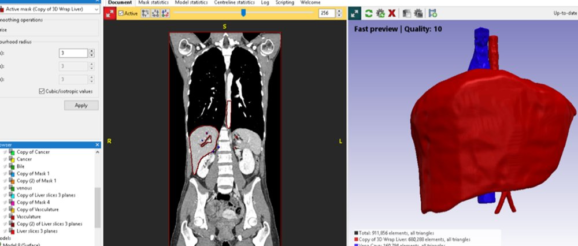How medical 3D printing helps improve patient outcomes – Med-Tech Innovation | Latest news for the medical device industry

Jessica James and Rebekah Dixon from the Simpleware Product Group at Synopsys (N.E.) Ltd., bring us the latest developments in medical 3D printing.
Medical 3D printing comes with multiple benefits, such as being able to provide personalised medical devices to patients, as well as being able to customise designs to suit different materials. Medical 3D printing is now being recognised by regulatory bodies as a viable method for clinical applications, albeit with there still being a long way to go in terms of adoption. Companies within the industry are finding innovative solutions to adapting medical 3D printing to various challenges.
One of the more significant advantages of medical 3D printing is that it can use scan data of patients (MRI and CT) to create models that are specific to unique anatomies and pathologies. The Simpleware Product Group at Synopsys are seeing some exciting developments in using the software to create medical 3D printing workflows that benefit clinicians, students, and other medical stakeholders.
New solution for cancer treatments with 3D printing
Medical 3D printing can be used to aid the expansion of possible cancer treatments. A UK based company 3D LifePrints, for example, uses 3D printing to explore anatomies and provide phantoms as clinical tools. 3D LifePrints recently created a liver model to look at the effects of varying dosages of radiation therapy. This process involves taking an MRI scan of the liver, before using Simpleware software to segment out regions of interest. The segmented image data is then suitable for printing on a PolyJet machine.
A notable feature of the completed liver model was that it could be modified at the design stage to include chambers for radioisotope samples. The 3D printed liver was scanned in a Philips PET/CT machine in order to predict the liver’s exposure to radiation. A combination of the measured dosage and a known cavity volume makes this possible. Having an anatomically accurate liver that can be held and shown to patients is important for clinicians in several ways, not least the ability to calibrate radiation bear diameters and avoid unnecessary exposure of tissues to radiation.
Visualising anatomies
In the United States, companies are finding ways to make 3D printed models a familiar part of clinical workflows. In Wake Forest Baptist Medical Center in North Carolina, researchers are creating models of tumours to aid in patient education. The Wake Forest team use patient-specific MRI data in Simpleware software to generate files suitable for 3D printing. Image processing tools are employed to segment a tumour from a breast model, before exporting STL files of the breast and tumour to explore how they relate to one another.
The breast model was hollowed so that the tumour model could be inserted within the structure and secured. This enabled intricate studies to take place. The two STL files were converted into physical models using a Stratasys J750 printer, with Vero material chosen to accurately represent the anatomy. Three parts were ultimately created; the two halves of the breast model and the tumour.
The finished model represents an excellent tool for clinicians to help patients visualise the size and location of their tumour, as well as potential treatment options. The value of patient explanation and understanding is an effect seen across different medical 3D printing cases, whereby a physical model helps educate patients on their condition. The ability to print in different materials improves the tactile experience of the 3D printed anatomy. In the future, there will be further options for bioprinting of replacement tissue, offering improved patient outcomes for different treatments.
Hurdles for medical 3D printing
Although there are many applications of medical 3D printing, both aforementioned and including prosthetic limbs, dental treatments, and the manufacturing of tools, there remains some key challenges for the technology. Some of the more problematic issues are the learning curve for clinicians, the steep cost of scanning and printing equipment, and the efficiency of the workflow in general. Despite some recent advances in acceptance, the rate of technological change for 3D printing is also making it a difficult area to regulate.
In this context, new methods such as artificial intelligence (AI) and machine learning promise improvements in speed and reduction in human error, but still create validation challenges. Hospitals trying to keep up with 3D printing may find it difficult to maintain expertise and keep up to date with the latest technology. As with most new medical technologies, 3D printing may be viewed as a costly luxury by some institutions, that is difficult to scale up. Improvements to workflows and the reduction of technical difficulty, of which Simpleware software is designed to be a support, will be crucial to standardising future uses of medical 3D printing.
